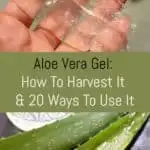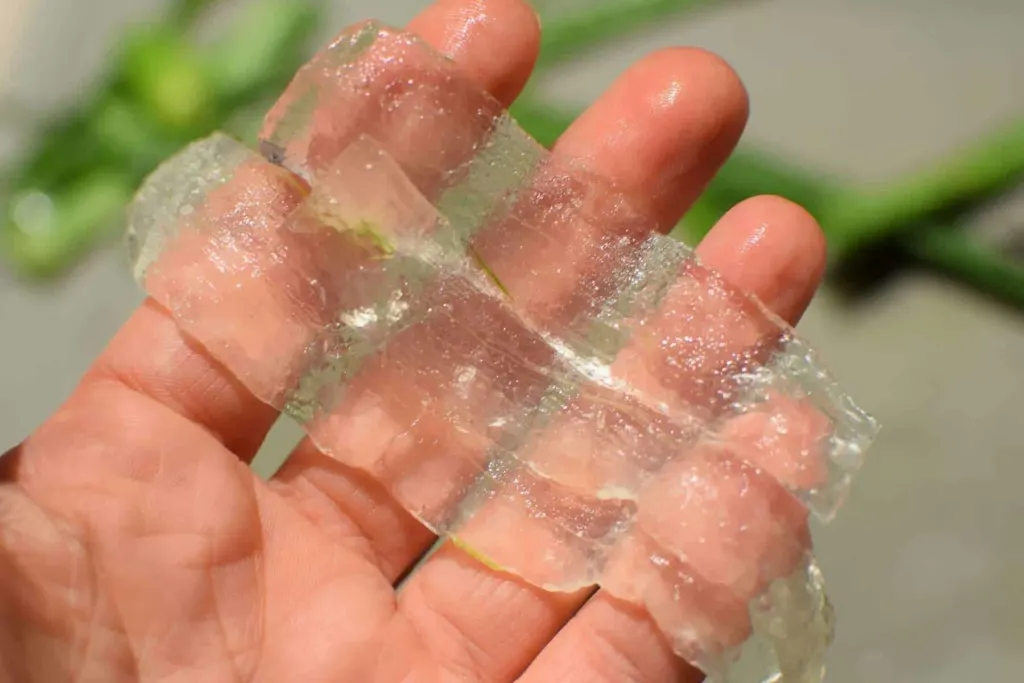
Aloe is one of those plants just about everyone has around the house. And if you don’t have a few, you should.
And if you have just one but would like some more, then learn how to grow brand new aloe plants from “pups”.
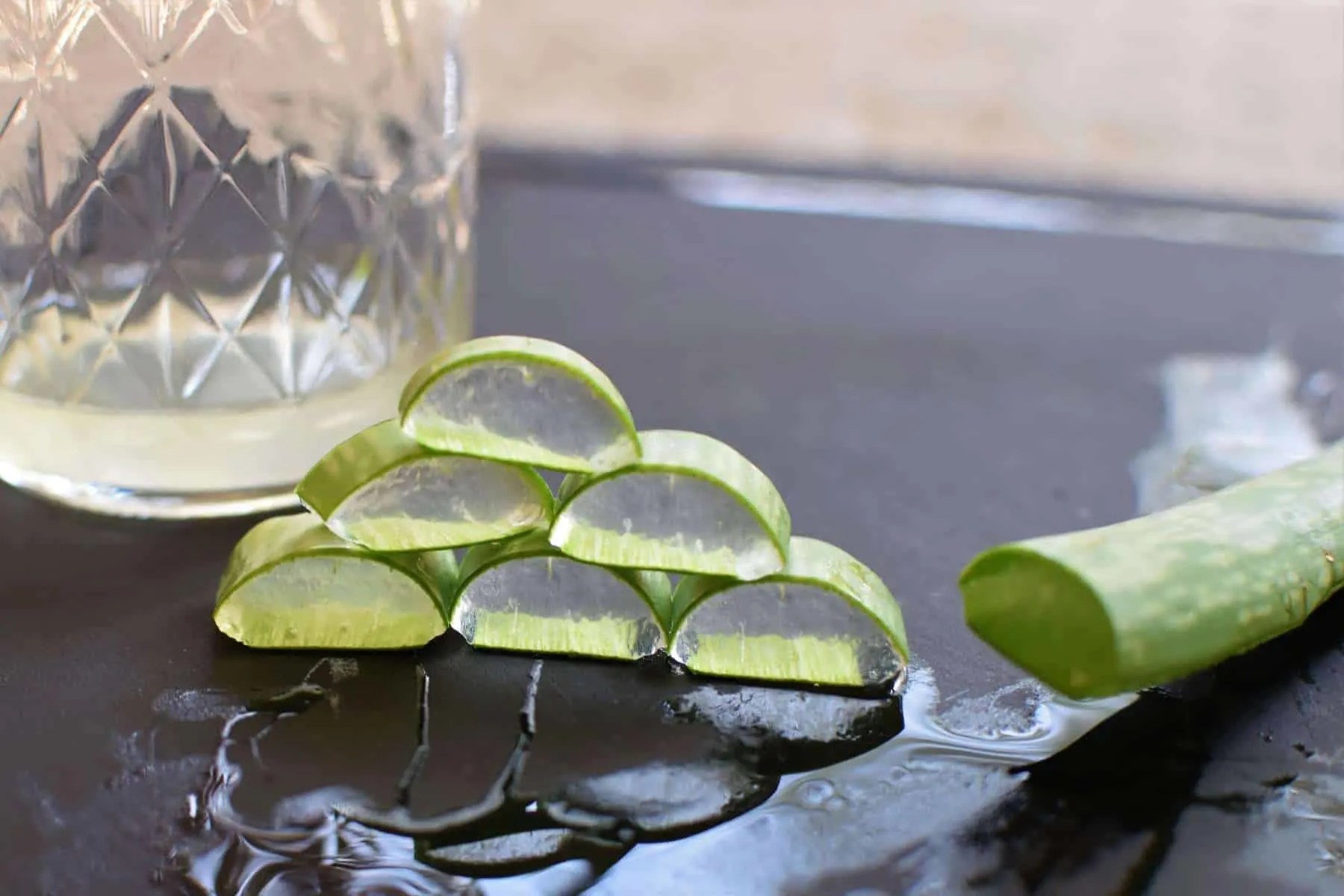
Aloe vera is one of the easiest succulents to grow.
They are like the introverts of the succulent world, best left to their own devices and checked on once in a while to see if they need anything.
I’m sure we’ve all heard of aloe’s many medicinal and beautifying uses. But beyond the occasional sunburn, how many of us have given that lovely green plant a second thought?
I think it’s time we change that.
Hopefully, after reading this post, you’ll be using your aloe plant regularly.
In this article I’ve rounded up some of the best health and beauty uses for aloe. I’m also going to show you how to get that aloe vera gel from your plant!
How To Harvest Aloe Vera Gel
Harvesting aloe vera gel is a pretty easy task.
You’ll want to take aloe from a well-established plant that is at least a few years old. Choose large thick leaves that are growing at the base of the plant.
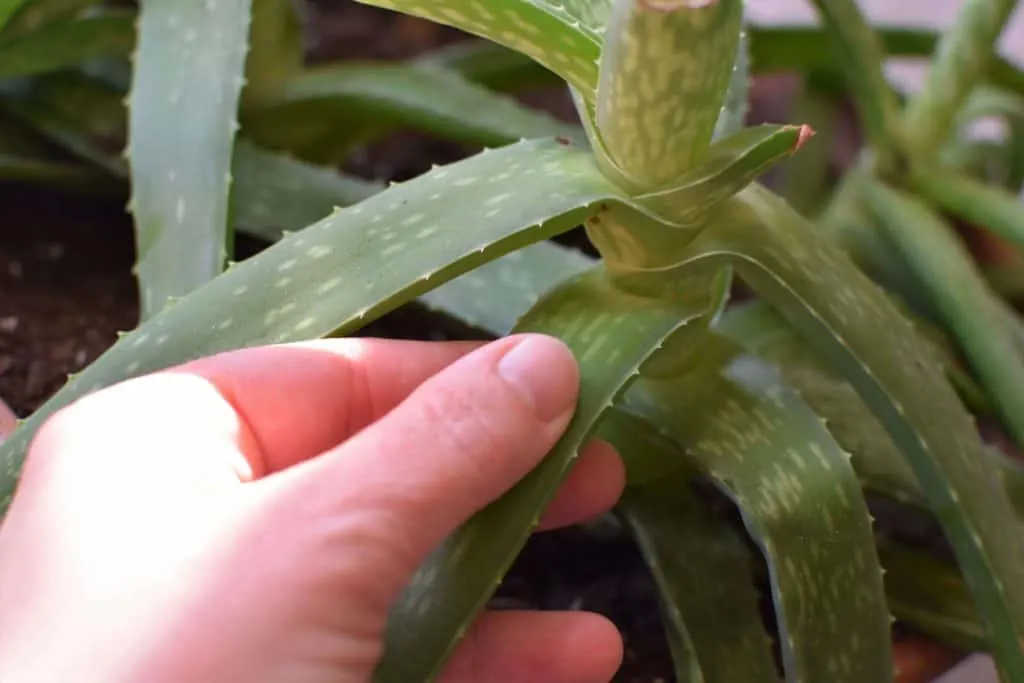
You’ll get the most bang for your nutrient buck if you take your cuttings as close to the central stalk as possible.
Cut your leaves using a clean knife or scissors.
Tearing the leaves off can damage the plant, and using a dirty pair of scissors or knife can contaminate and infect your lovely aloe. This little precaution will leave you with a healthy aloe plant to harvest from for years to come.
After you have cut your leaves, you’ll need to put them in a jar or glass, cut side down to drain. Aloe contains a yellow-ish latex substance called aloin, which can cause severe gastric distress if you ingest it.
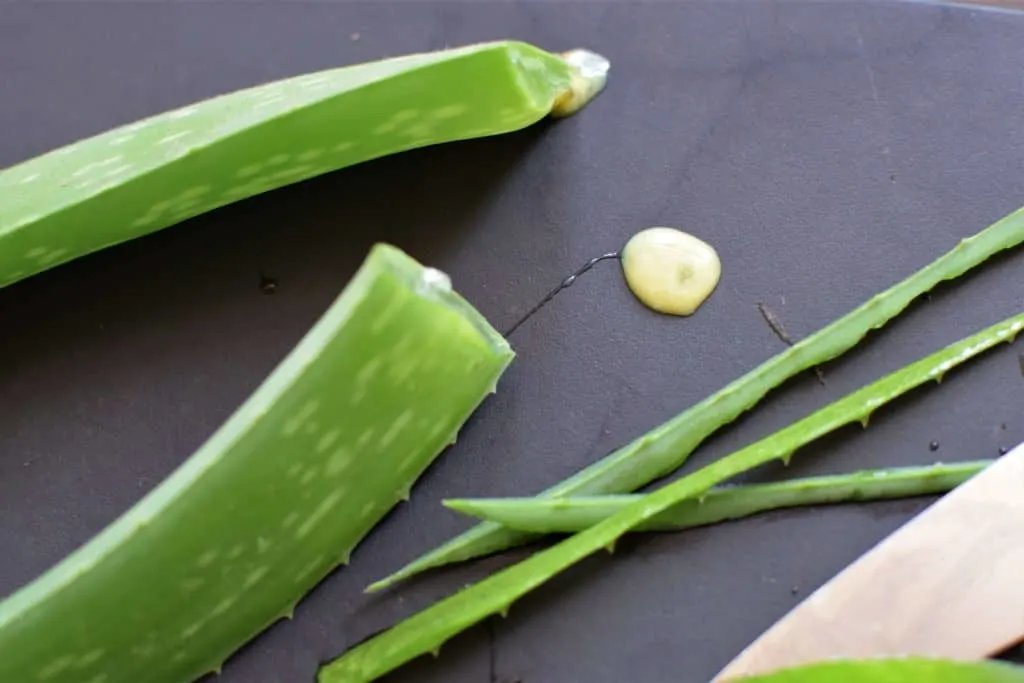
Let the aloe drain for about 10-15 minutes and then rinse your leaves off with cold water and pat dry.
If you are planning on using the aloe on your skin, you can squeeze it out of the leaf and apply it directly.
But to get at the aloe vera gel, you’ll want to cut the skin away.
A small paring knife, or even better, a filet knife works well to remove the skin from your aloe. You’ll want your knife to be good and sharp for a clean cut.
You’ll notice one side of the leaf is more rounded, and the other side is flatter. Put the flat side down and use your knife to trim away the spines, keeping as close to the edge as possible. You don’t want to lose any of that aloe-y goodness!
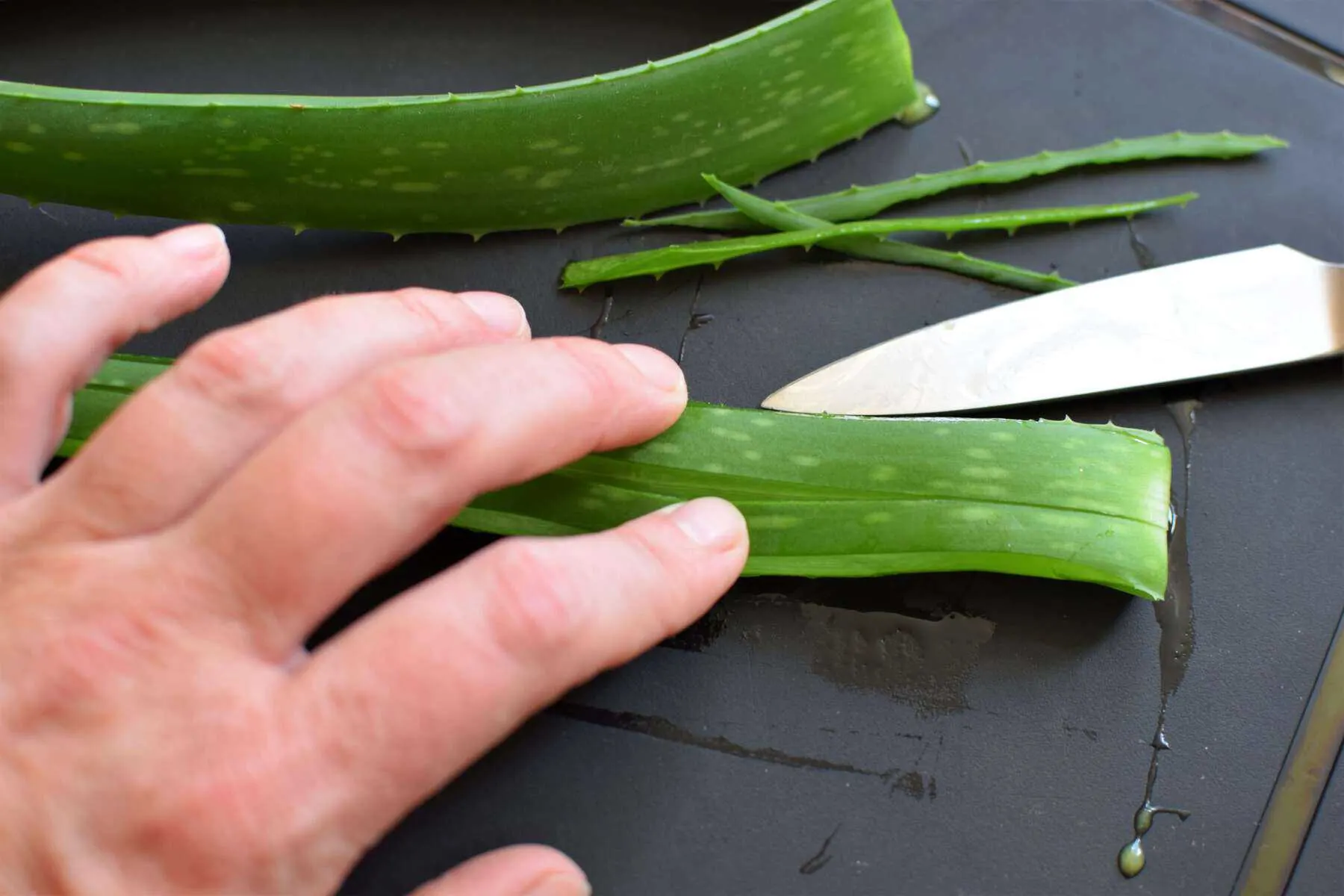
Flip your leaf over and trim the flat outer skin from your stalk, again keeping your cut as close to the skin as possible. It’s just like filleting a piece of chicken or fish.
Now you can trim the skin away from the other side. Be careful as it gets a little trickier to do at this point. The aloe vera gel is very slippery.
You will have a pretty substantial chunk of aloe gel. You’ll need to rinse it again to remove any remaining aloin.
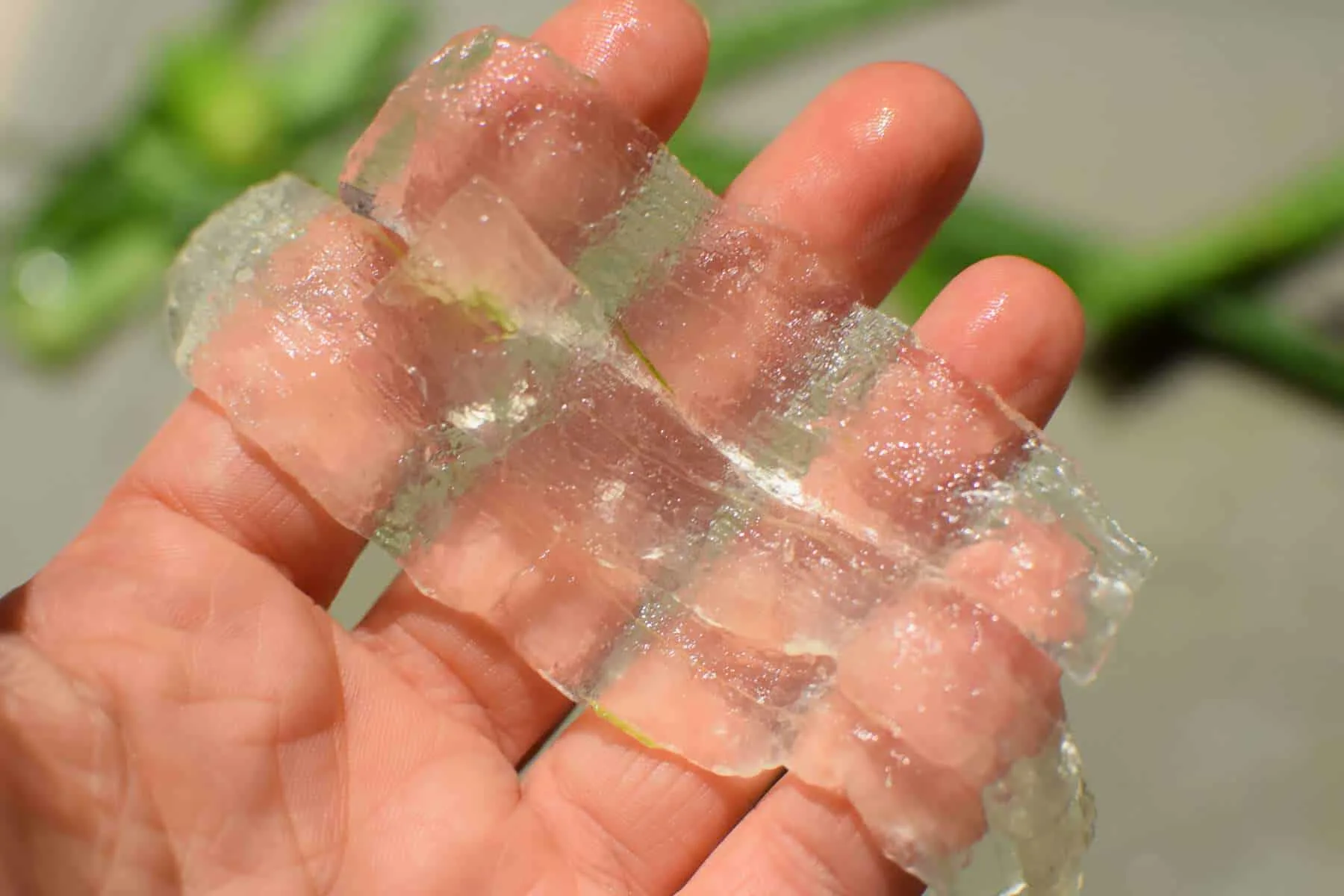
That’s it!
Depending on the size of your aloe plant, 3-4 leaves should leave you with about ½ to ¾ cup of aloe vera gel.
You can use it immediately or store it in a covered container in the fridge for a week.
How To Freeze Aloe Vera Gel
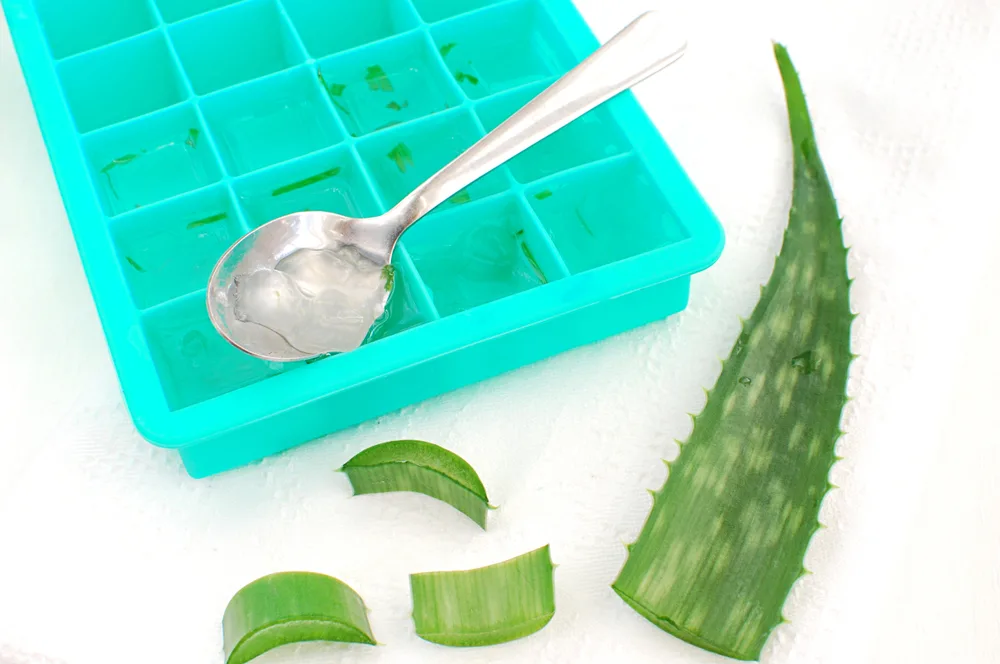
If you won’t be using it within that time frame it’s best to freeze it. The sooner, the better.
To freeze your aloe vera, you’ll want to pour it into ice cube trays. If your gel is on the chunky side, you may want to pulse it with a blender or food processor a few times to make it easier to pour.
Once it’s frozen, pop your aloe-sicles out and store them in a zippered freezer baggie, squeezing as much air out as possible. (I like to use the water-immersion method to get the air out of baggies for freezer storage.)
How To Make Aloe Vera Juice
To make your own homemade aloe vera juice, blend two tablespoons of aloe vera gel with one cup of water.
Use or freeze your aloe juice right away.
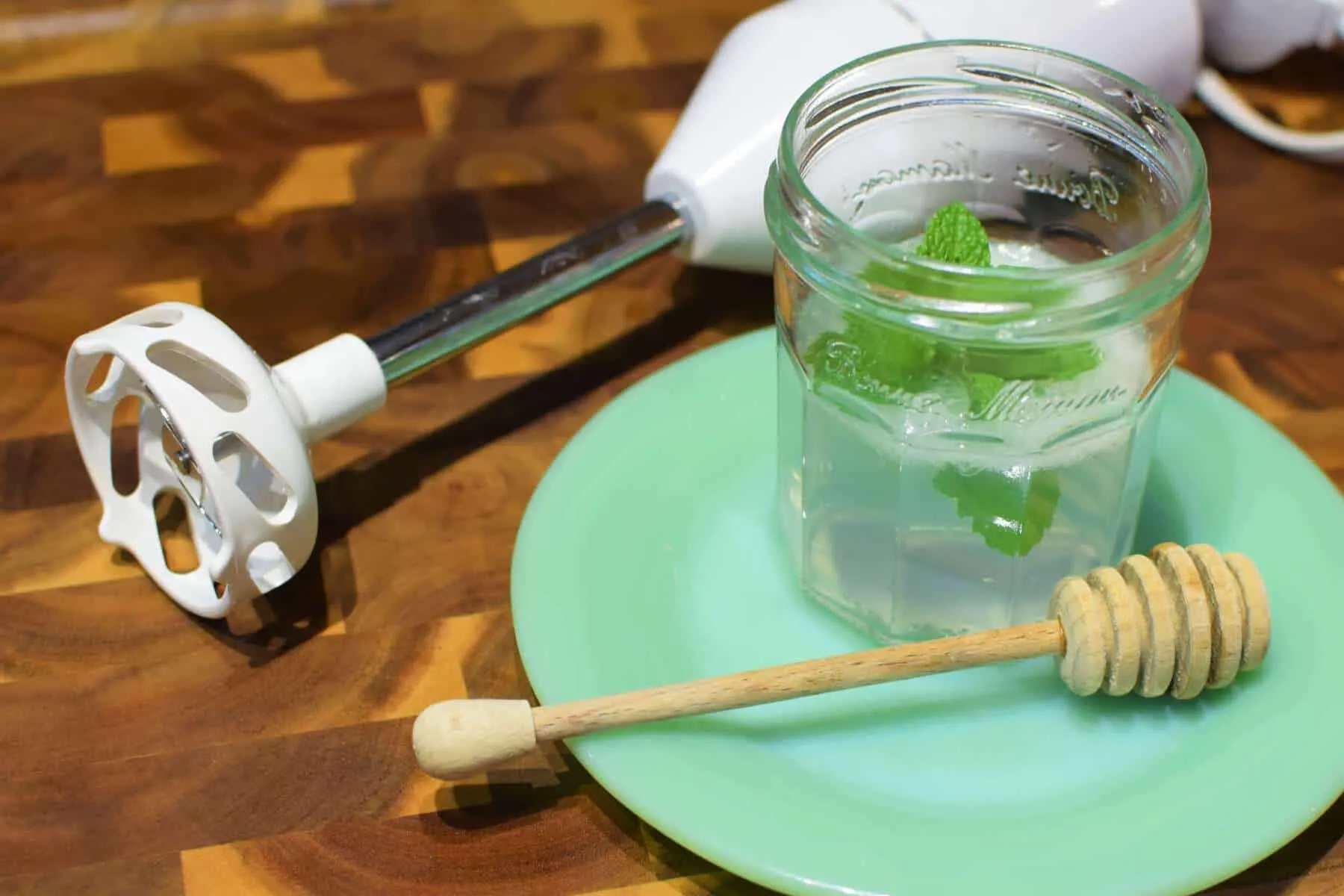
Aloe has a taste similar to cucumber. Some great flavors that pair well with it are lemon, mint, honey, and ginger.
20 Brilliant Ways To Use Aloe Vera Gel
Before we jump in, please, ALWAYS consult your doctor before trying treatments with medicinal plants. This article is informational purposes and not meant as medical advice.
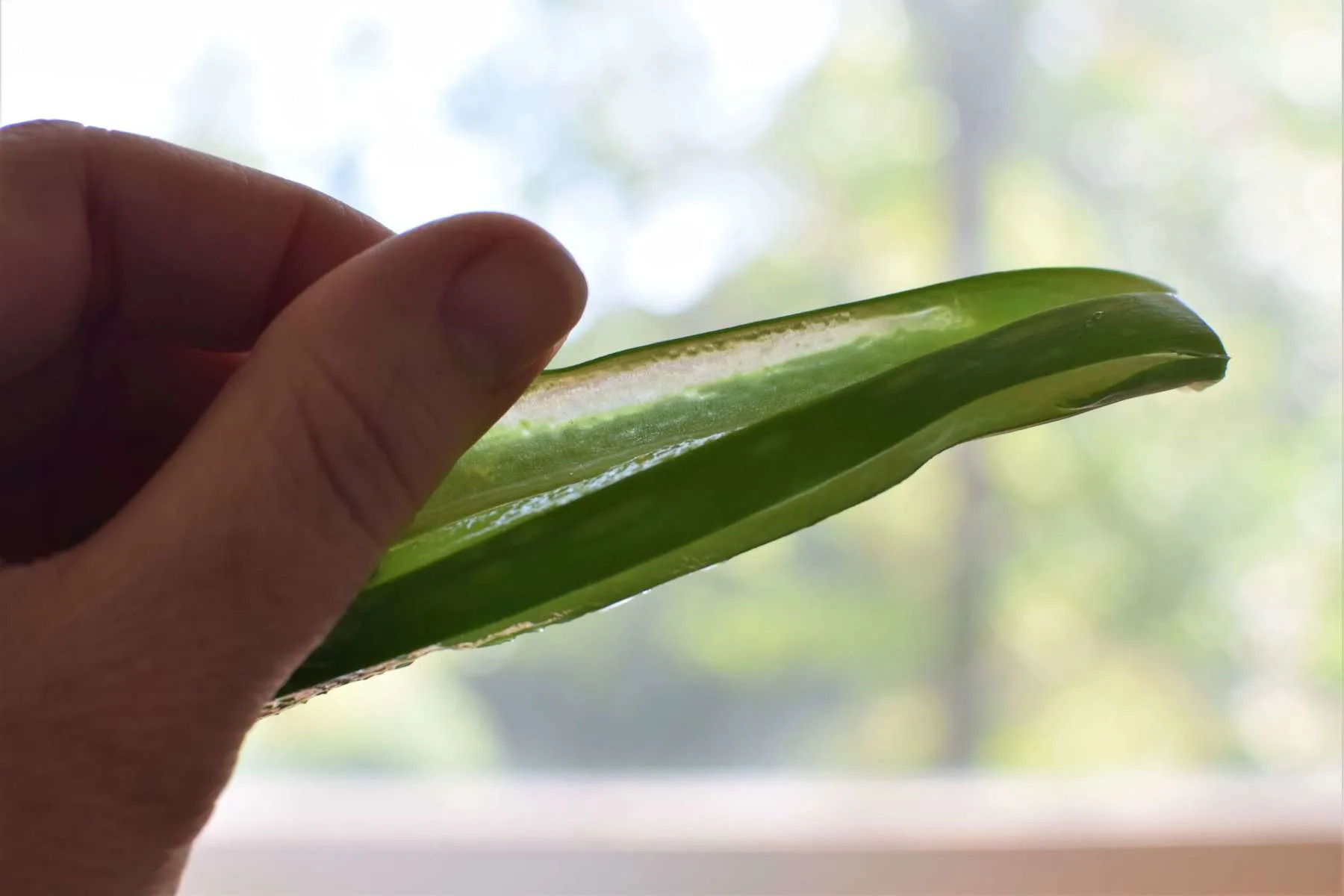
Beauty Benefits of Aloe Vera
After digging into all the beauty benefits of aloe, I’m thinking I might need a plant or two sitting on my vanity.
Aloe is an excellent ally when it comes to keeping you looking your best. I mean come on; the ancient Egyptians didn’t call it “the plant of eternity” for nothing!
1. Natural Moisturizer
Aloe vera’s moisturizing benefits have been well documented, so it’s no surprise to see it in many beauty products. Skip the added chemicals and apply it directly to your face and skin to moisturize and heal.
2. Gentle Makeup Primer
Aloe vera makes an inexpensive and natural alternative to makeup primers, and it’s so much gentler on your skin. If you want your makeup to last beyond the lunch hour, the key is to use a good primer on your eyes and face first. Apply a thin layer of aloe vera gel to your skin and let it dry before applying your makeup.
3. For Eyebrows
To keep your eyebrows looking well-groomed, dab a clean spoolie brush into a little aloe vera gel. Sweep gently over your brows to shape and hold them in place.
4. For Applying Glitter
Can we talk about the ’90s for a minute? Am I the only one that misses body glitter? Mix a tablespoon of aloe vera gel with as little or as much glitter as you like. Apply to your cheeks, shoulders and hair for a hit of shimmer. (NEVER use near your eyes.)
5. Natural Exfoliator
Mix ½ cup of aloe vera gel with ½ cup of brown sugar or coffee grounds for a moisturizing exfoliator. Rub gently over your body and rinse with warm water for soft and smooth skin.
6. Natural Makeup Remover
At the end of the day, use aloe vera gel as a natural makeup remover. Simply rub the gel over your face and wipe away with a tissue or cotton pad. Rinse your face with water.
7. Toothpaste Alternative
No joke, using aloe vera to clean your teeth has so many benefits.
According to this paper published in the Journal of Pharmacy and Bioallied Sciences, in April 2015, Aloe Vera performed better at controlling the bacteria that cause cavities than commercial toothpaste.
Not only that, because it doesn’t contain the abrasives common to commercial toothpaste it’s gentler on your teeth. Give it a try if you have sensitive teeth.
According to the study, aloe also helped in healing several other oral maladies as well, such as gingivitis and periodontitis.
8. Mouthwash
If you want to prevent bad breath, try this homemade aloe vera mouthwash recipe from Live Simply.
9. For Shaving
Aloe vera gel is great for shaving too. It makes your skin slick and prevents razor burn. You’ll have baby-soft skin after you shave. Once you’ve finished, be sure you rinse your razor thoroughly.
10. As A Hair Mask
Create a scalp-soothing hair mask with aloe vera gel. Massage it directly into the roots of your hair, working it into your scalp. Don’t forget to smooth some down your tresses. Let sit for 20 minutes before rinsing out with cool water.
11. Anti-Frizz Hair Treatment
During humid weather, rub a small dab of aloe between your fingertips and gently pat your hair to smooth flyaway and frizzy hair. A tiny bit should do the trick; too much can weigh your hair down or make it sticky.
12. For Acne & Pimples
Give acne the boot by applying aloe to zits. Salicylic acid is a well-documented acne treatment, and guess what’s naturally occurring in aloe vera? Yup, salicylic acid. Using aloe to treat acne is an excellent choice for people with sensitive skin.
13. Natural Lubricant
Consider keeping an aloe plant on your bedside table, this plant also makes an excellent natural personal lubricant. Bet you didn’t know aloe would be good for your love life too.
Not bad for the plant you’ve been ignoring all this time, right?
Let’s check out what aloe can do for your health.
It bears repeating that you should ALWAYS consult your doctor before using aloe vera as a medical treatment.
As I said, the ancient Egyptians called aloe vera the plant of eternity and for a good reason. According to the study I cited earlier in the article, this plant has it all!
Antiseptic, anti-inflammatory, it’s PACKED with vitamins and is one of the few vegetarian sources of B12.
Aloe even makes collagen, which is like the fountain of youth, keeping skin, joints, and bones young and strong.
Aloe vera contains nearly all of the amino acids our bodies need to stay healthy and includes several helpful enzymes, as well. It also has salicylic acid which is a pain reliever and helps fight acne.
The scientific community has taken notice of this plant wonder, and research has taken place concerning the health benefits of aloe vera. Some of which have found interesting results that beg for further studies.
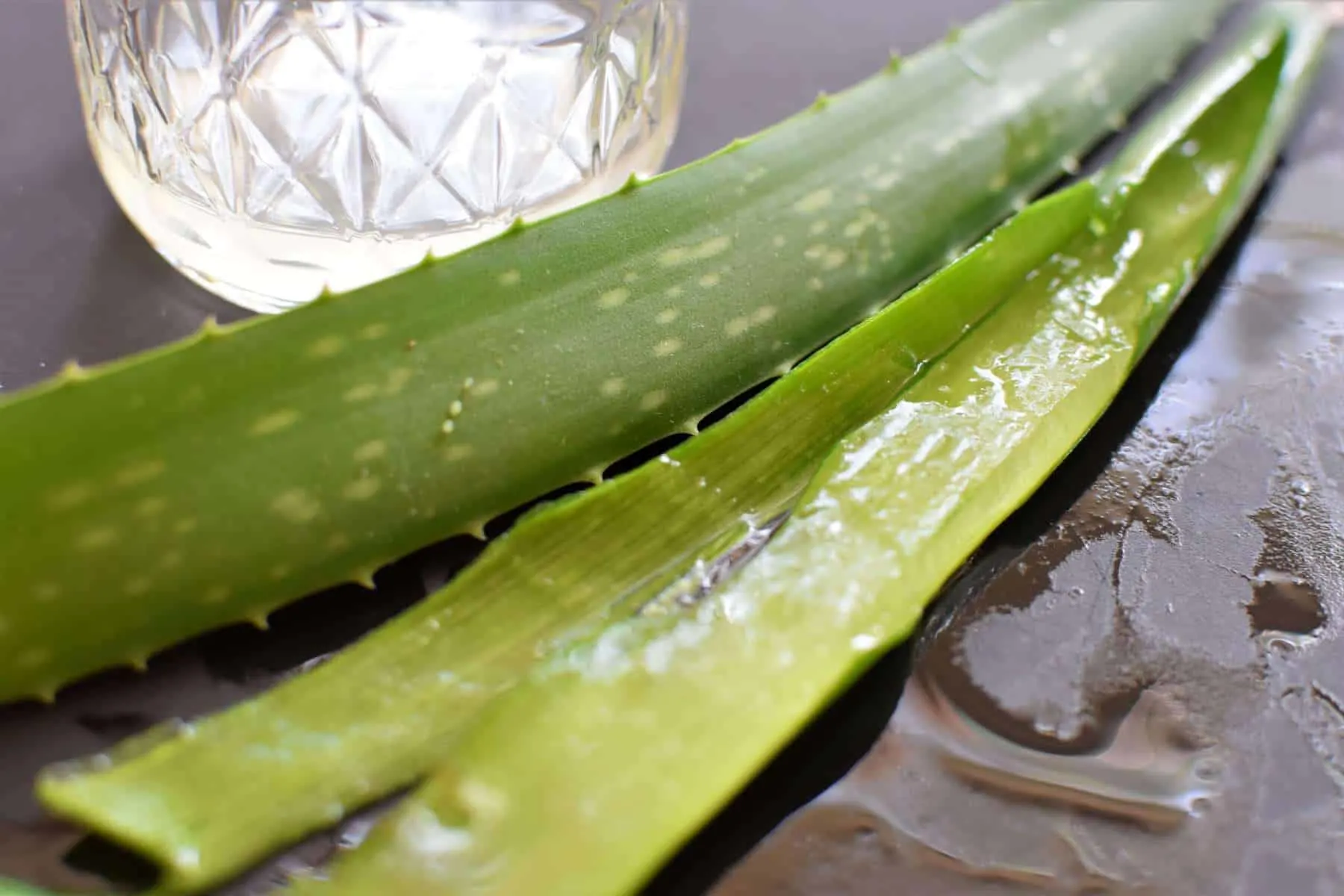
Health Benefits of Aloe Vera
14. To Soothe Minor Burns
Okay, we all know that aloe vera is great when you’ve been out in the sun too long and are feeling rather lobster-ish. But did you know it’s excellent for minor burns as well? It’s anti-inflammatory and natural pain-relieving properties make it a great natural soothing choice to heal burns.
15. For Bug Bites
Those properties also make aloe vera a great natural option for bug bites. The itch is relieved, and the bite heals faster too.
16. For Constipation
Aloe vera also contains a compound called anthraquinones in the latex, which can help with constipation. The next time you’re having a hard time, try adding a little aloe vera juice to your morning smoothies and see if it doesn’t help smooth out other things as well.
An important note: if too much is ingested at one time, the latex can cause severe gastric distress, and some studies have suggested that long-term use of the latex can cause intestinal cancer. Please consult your doctor when considering aloe vera to treat constipation.
17. To Ease (Or Prevent) A Hangover
If you had one too many cocktails at the party last night, consider sipping some aloe vera juice or throwing some gel in your smoothie. This plant is packed with water and nutrients, which can help you feel better after your night of overindulgence.
Some folk medicine traditions even insist that drinking aloe vera juice before you consume alcohol can prevent a hangover. I don’t know whether it’s true, but it wouldn’t hurt to try. At the very least you’ll be well hydrated at the party!
18. For Bloating
Speaking of overdoing it; the next time you’ve overeaten and your stomach isn’t happy about that third slice of pizza with extra green peppers, try sipping some aloe vera juice. Aloe vera’s anti-inflammatory properties and natural enzymes can soothe your tummy troubles.
19. For Canker Sores
According to a study conducted at Chulalongkorn University in Thailand, aloe vera gel applied to a canker sore sped up the healing time. Aloe vera was also shown to relieve some of the pain associated with these awful mouth sores, based on another study published in the Dental Research Journal.
20. For Diabetes (More Research Needed!)
Natural medicine practitioners have long been advocates for the use of aloe vera in treating diabetes. It appears that science is taking notice too.
A promising study involving aloe vera and blood sugar levels was published in the Journal of Diabetes & Metabolic Disorders. The study found that fasting blood glucose levels in pre-diabetic subjects was much improved after four weeks. Ultimately, the scientists concluded that more research was needed.
The study results reveal promising news as the number of people with type 2 diabetes grows daily.
Pin This To Save For Later
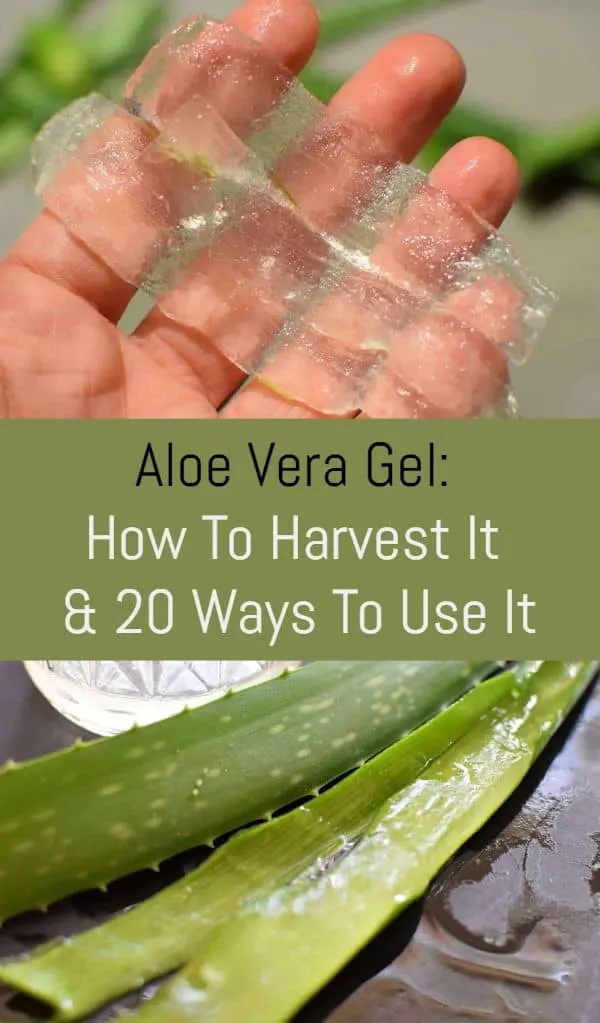

Get the famous Rural Sprout newsletter delivered to your inbox.
Including Sunday ramblings from our editor, Tracey, as well as “What’s Up Wednesday” our roundup of what’s in season and new article updates and alerts.


